Caladium: Proper Planting, Care And Propagation Of An Elephant Ear Plant
The attractive leaf ornamental plants are also traded by us under the name of caladium, buttercup, colored leaf, or elephant ear plant. The large arrow- or heart-shaped leaves sit on high stem attachments and conjure up a lush splendor.
The charming thing about this plant genus is the colorful patterned leaves, while the flowers are rather inconspicuous. Only occasionally developed are the flowers rather small compared to the leaf size. The delicate calyxes are light creamy white or slightly greenish in color. In the center, the typical high flower-head rises up. The Caladium belongs to the arum family (Araceae), which includes other popular indoor and garden plants such as the calla, dieffenbachia, and the arrowleaf.
Caladium Basic
Table of Contents
The caladium available from us are hybrids of about a dozen species that can be found wild in tropical and subtropical regions of South and Central America. Especially often the Caladium bicolor breeding is offered. The name comes from the two basic colors of the leaves. These are usually red-green or white-green, although yellowish and tricolored cultivars also occur.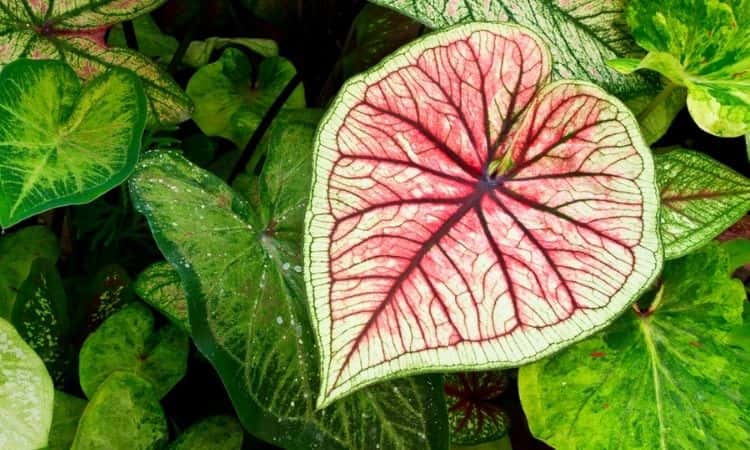
The patterns can be spotted or very filigree branched. Another popular variety is the hardy species Caladium humboldtii, which only occurs with green-white fibrous leaf markings. The Caladium bicolor reaches sizes of up to 60 cm while the Caladium humboldtii remains much smaller at about 40 cm.
The perfect location for Caladium
In their native country, these beautiful leaves plants grow in the tropical undergrowth. Warm, humid, and protected from direct sunlight, they thrive magnificently. If you want to keep the Caladium successfully in our latitudes, you should offer it similar conditions. During the growing season, the plants prefer temperatures of 69.8 to 77 °F.
Since the entire strength of the plant is in the tuber under the earth, it must also be well warmed at all times. The leaves, on the other hand, need a high level of humidity. This can be achieved in our greenhouse or in the apartment by regular spraying or by keeping the plants in groups with other green plants.Elephant ear plants, for example, which releases a lot of moisture into the room air, is suitable as neighbors. Spraying is always only fine and from far away. If the water is too calcareous, there is a risk of unattractive deposits that can damage the plant. In this case, water bowls for evaporation are much better suited to raise the humidity. Because of its love of humid air, the Caladium is ideal for a sufficiently bright location in the bathroom.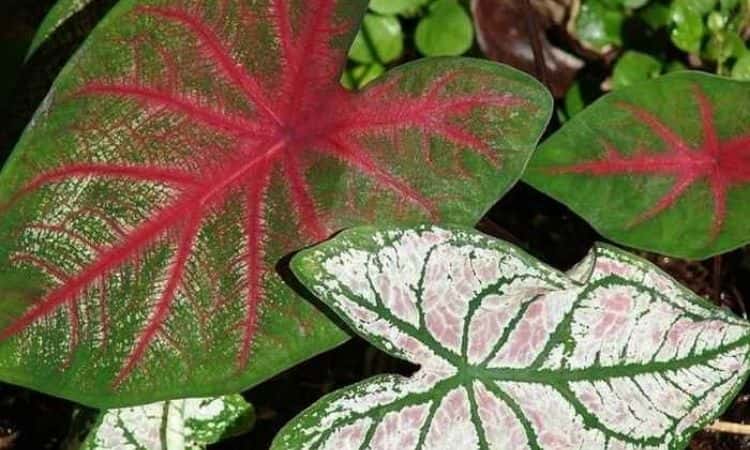
In the summer, the Caladium can be moved to a sheltered place in the garden or on the terrace. It stands perfectly in the light shade next to or under larger plants or bushes. A little morning or evening sun is good for her, but never full sun during lunchtime or over a longer period.
The hibernation
What is unusual about this houseplant is the pronounced dormancy during the cold season. In order for the Caladium to grow well in our country, it must survive the winter as a tuber. If the days become shorter, most plants discard their leaves completely and wither.
Whoever does not know this special characteristic of the caladium could also erroneously be of the opinion that the plant has died. The tubers can remain on the earth and are watered there only sparingly about every four weeks. Alternatively, the tubers are removed and wintered with completely little soil or peat at a dark place.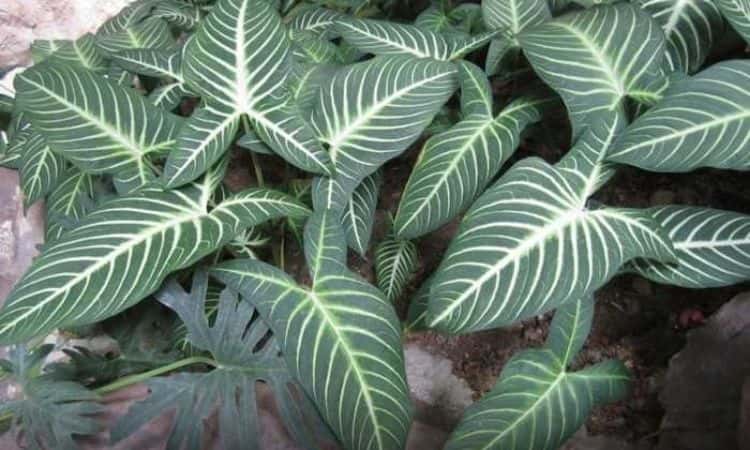
Potting, repotting, and propagating caladiums
The removal of the tubers in autumn can be combined with the propagation of this wonderful leafy plant. For this purpose, the mother tuber is simply divided. The trained eye immediately recognizes the daughter shoots and can cut them off. Beginners should simply slowly take the root ball apart and carefully remove the entire soil. The new shoots can then be easily removed completely from the mother tuber with a knife.
The tubers are used when regular temperatures of 21 °C prevail again. Often, the small leaves at the top of the tuber are already visible. For renewed sprouting, place them 2 to 4 cm deep in a suitable pot with plenty of soil and a little loose peat.
The right soil and the best fertilizer
Caladium substrate is prepared from one part simple soil for indoor or foliage plants and two parts peat. Alternatively, mixtures of peat, sand, and a well-seasoned compost mixture are also suitable. The plants are fertilized only very moderately. During the vegetation period, only a small dose of liquid fertilizer is administered with the watering for about 14 days.
Further tips for care
The soil of the Caladium is best always slightly moist, but never saturated or even with the backwater. Excess water should be removed immediately from the coaster. It is best to water the plant regularly and only moderately. The surface of the soil should dry out between waterings, but never the whole rootstock. If the leaves turn brown towards late summer or autumn and curl up, watering will be significantly reduced. The plant has already stopped growing by then. If you water the tuber vigorously now, you risk premature rotting of the tuber.
If the plants already show dry leaves or brownish discoloration well before this time, too dry air, cold or stagnant moisture can be responsible. You should never try to treat these symptoms with an extra dose of fertilizer. The extra nutrients could only put additional stress on the plant. The first aid measure for the caladium is always sufficient heat and humidity. If you offer her these two elixirs of life sufficiently, she will enjoy this colorful leaf plant for a very long time.
Wintering Caladium – How to prepare your houseplant for the cold season
From mid-September, your caladium needs preparation for the winter. This is the only way the tropical caladiums from South Africa can shine in all their glory again next spring. Therefore it is now time for this colorful houseplant to slowly get its well-deserved winter rest. But how do you proceed best? In this article, I will show you step by step how to prepare the plant and tuber so that you can enjoy the beautiful leaves next year as well:
Step-by-step instructions for hibernating your caladium
This is what my Caladium Strawberry Star looks like before winter:
You are probably wondering how you can tell that it is time to prepare for winter. All photos, where you see only the houseplants, were taken in the middle of September. The Caladium Strawberry Star still has many leaves, but they are much smaller than in the previous months. I see this as a sign that the Caladium is slowly not getting enough light anymore and therefore can slowly but surely go into hibernation.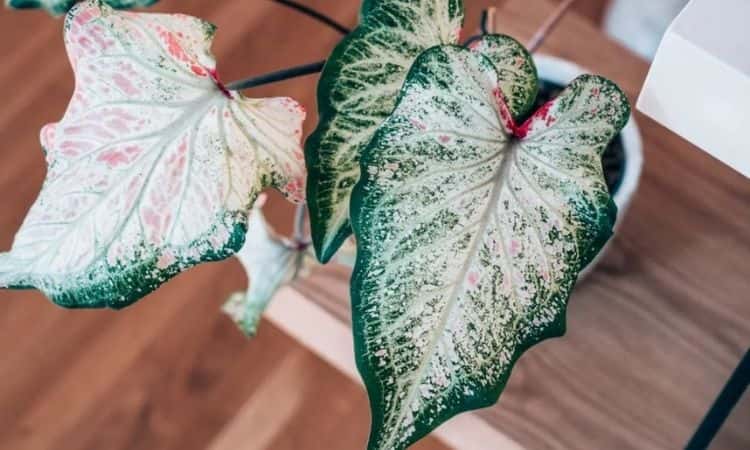
In the USA, caladiums are often referred to as buttercup or colored leaves. As a tuber plant, which belongs to the family Araceae, it now needs slowly rest. Therefore it is often called a rather demanding houseplant. But don’t worry, wintering is not that difficult and I have only enjoyed my caladiums so far. They stand in a bright location at a south window without direct sunlight. So they have been producing one leaf after the other since spring.
- Do not water caladium anymore. Even if it hurts, from early autumn the caladium is no longer watered. The soil should dry completely so that you can remove the tuber. Alternatively, you can leave the tuber in the top and water it only every four weeks. But I recommend the variant I will present to you in the next steps.
- Cut off all leaves and put the tuber in the sand. Since you no longer water your houseplant, the leaves will gradually dry out. Only cut them off when they are completely dried out. When you have removed all leaves, you can carefully take the tuber out of the pot. I now lay the tubers in dry sand and put them in the cellar. In the cellar, the temperature is constant at about 18 °C. This is the ideal temperature for your caladium to hibernate during the winter.
- hello spring, hello Caladium. The caladium remains in the sand until spring. From the end of March to the beginning of April the tubers can be placed in new soil. For driving the tubers need now temperatures of at least 21 °C.

Further care tips for caladiums
- Never spray the leaves! I made this mistake directly on my Caladium Strawberry Star. I sprayed the leaves with lime-free water right after I bought it, just like I do with my other tropical houseplants. Not a good idea, because the next morning the leaves had brown spots directly. That’s why you don’t spray your caladiums, but use the second care tip to provide enough humidity.
- Water bowls for more air humidity. The Philodendron and the Diffenbachie also belong to the Arum family. It is important to have a constant high humidity, which can be maintained at home with a simple trick without humidifiers. Place a wide bowl of water directly next to or under the caladium. This way I make sure that the caladium continues to produce beautiful leaves.
- When the leaves turn green. This is a clear sign that your caladium does not have enough sunlight. I notice this in September, especially with the Caladium Candyland variant. The new leaves have a much bigger green part. You can see this well in the photos of the Caladium Strawberry Star. When autumn comes, the greening is normal. However, in spring and summer, it means that your plant needs more light and you should look for another location.
- When the leaves turn pale. Caladium is too much in the direct sun. The morning or evening sun is fine, but the direct sunlight of the hot months of the year is too much for the thin leaves. That’s why they lose their color and therefore their beauty. So the changeover works wonders.
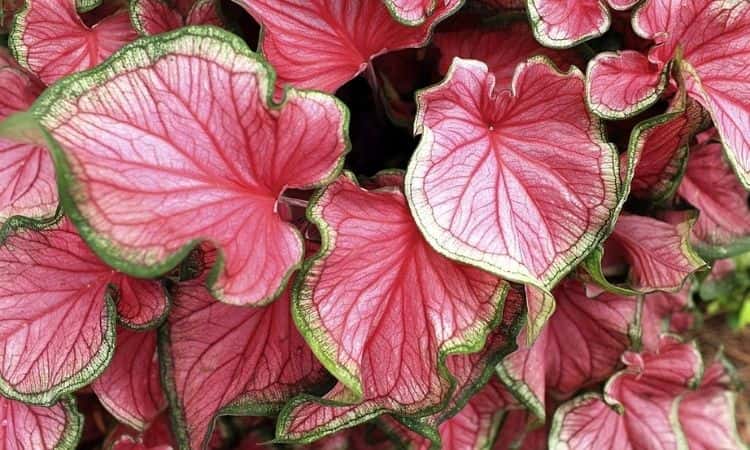
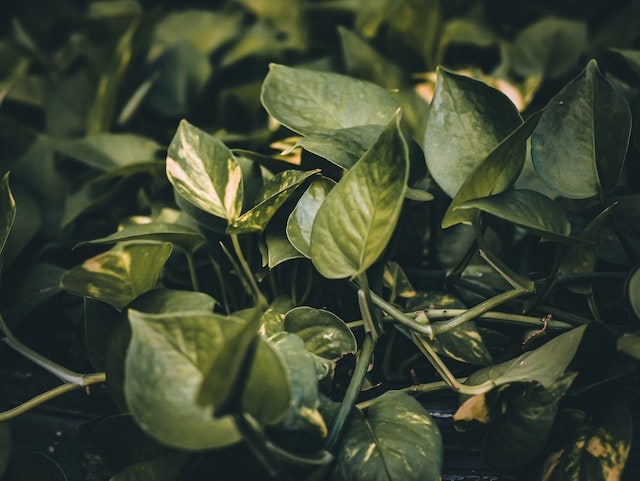


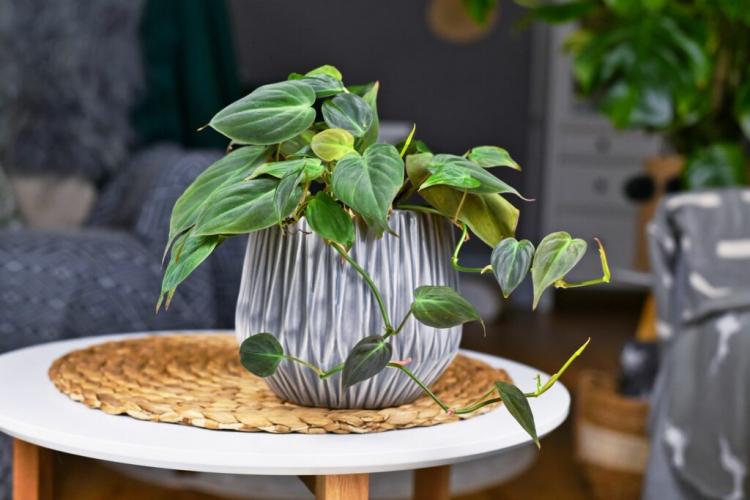

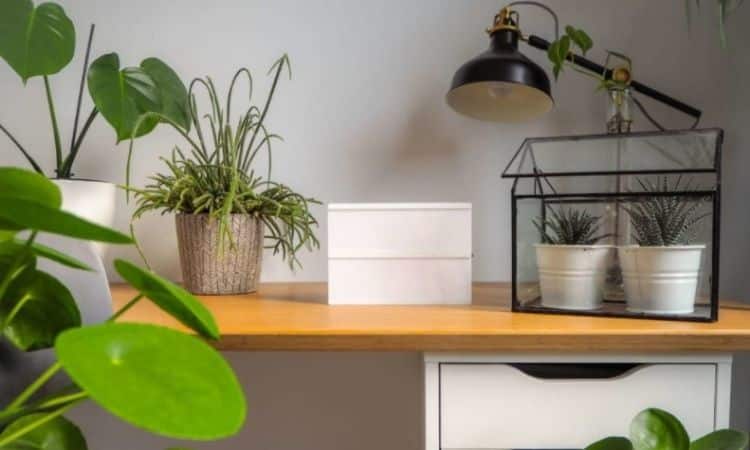
I did not find here such a theme, what to do?
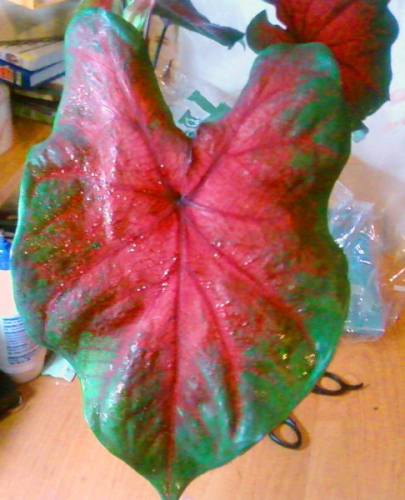
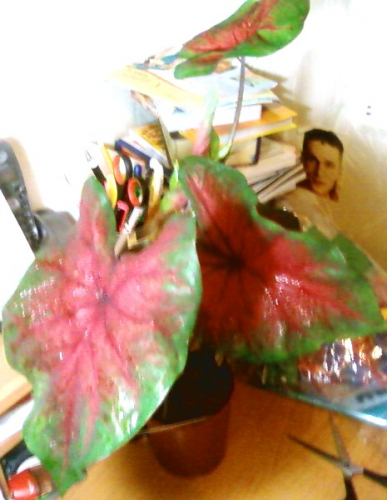
Here is my caladium. After reading a little I realized that he is a trickster. Now the question – how and what to do with it? Here is the winter. I’ll stop watering it and then? It turns out he all – all its leaves all its beauty will lose? And maybe it is not bulbous? I’ll transplant tomorrow – I’ll see. And what will happen to him if his onions and I will not do him rest. And it will stand with leaves until summer? Thank you for your complicity!
Hi Ann. I’ll answer in order.
1. Caladium doesn’t have a bulb, it has tubers.
2. The plant has a distinct dormant period. In August, there is a withering of leaves, so watering is gradually stopped, and the tubers in pots remain in a dry environment. Until March, the tubers are kept in a dry place. The tubers are well preserved in an old substrate or in the sand at a temperature not less than 65°F, expediently at 68°F. To avoid significant shrinkage of the tubers, moisten the substrate periodically. The buds will germinate in early March. From late February to March, peel the tubers, separate the small ones from the large ones, and plant them in pots.